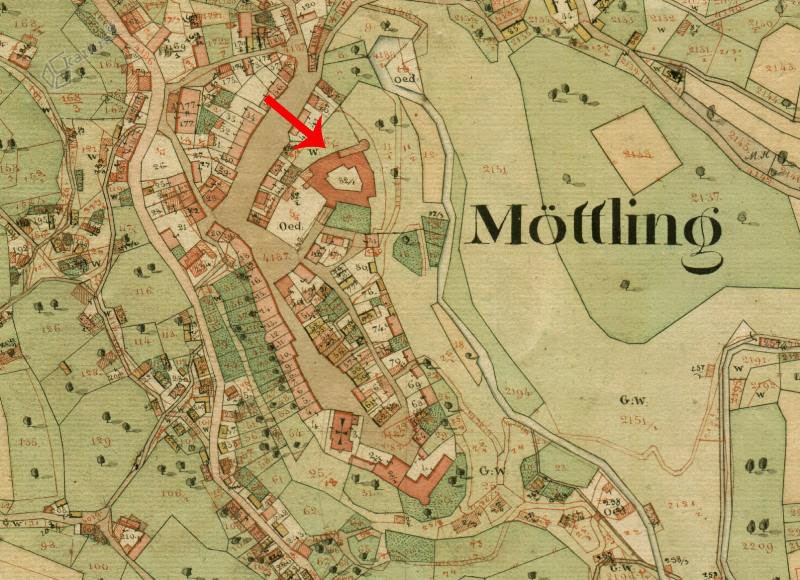 |
| Municipality: Metlika Author: Johann Weichard Valvasor |
 |
| Historical region Carniola Author: Hugo Gerard Ströhl 1890 |
LOCATION
Country: Slovenia
Historical region: Lower Carniola
Municipality: Metlika
City: Metlika
GPS:45°39'5,6" N 15°19'3,37" E
 |
| Castle and city Metlika from the book, Die Ehre dess Hertzogthums Crain in 1689 Author: Johann Weichard Valvasor |
The origin of the name Metlika has supposed to came from fugitive people of Japods from their former capital city Metulum, which was conquered by the Romans with twelve legions in 33 BC. Survivors of the newly established town named it Metlika in the memory of the lost city.
HISTORY:
First written mention of the castle Metlika is from the year 1338 as Möttling. In the year 1431 castle and city Metlika were conquered by 8.000 headed army of the Turks. City was then still largely built of wood and Turks managed to kill most of the population and the rest were taken as prisoners of war to be sold as slaves, the church was torn down and valuables stolen. The settlement was fortified in to a city in the 15th century because of the Turkish threats. Castle was in the begining and at the end of 18th century burned down but later rebuild.
COAT OF ARMS:
On a white shield is a depiction of a red tower with two raven guards. White is a metal colour that represents purity, cleanliness, innocence, wisdom and joy. The tower represents safety and grandeur, color read represents right, strength, courage, dignity and love. The black ravens represents divine providence and colour black perseverance, humility, peace, death, ruin and sadness.
 |
| Coat of arms of the city Metlika Author: Johann Weichard Valvasor |
In old days Metlika was just a village. One of the lord commanded the settlers to built castle Pungart next to the village, which was guarded by castle guards. In the castle lived an evil countess. She took from farmers their grain, wine and livestock. Anyone who resisted was sent to prison where they were thrown to the bottom of the castle tower, left to die.The Countess cursed whenever she got angry. When she did, then everyone froze with terror and fear. Whomever she cursed was turned into stone.One day the Turks started attacking close to Metlika. The Countess orderd her guards to wake up all the servants if they got closer to the castle. One night the guards fell asleep and Turks climbed the walls and broke into to the castle. Countess realized that the Turks had come. She was angry and miserable cursed the two guards. Her curse has turned them into a black ravens, which flew on the roof of the castle tower. The Turks killed the evil Countess and burned down the castle. Only castle tower remained, which the fire has not touched. The Turks have repeatedly attacked Metlika but settlers have heroically fought against them and therefore got city rights and Metlika became a city.Over time, the castle tower collapsed into dust and of castle Pungart was left no trace. With the help of this story was created city coat of arms, which represents the castle tower and the two seated enchanted guards turned into ravens.
OWNERS:
In the 16th century the owners were Counts Allaps, next were croatian nobleman Frankopans. In the 18th century the ownership of the castle was under Zagreb Cathedral Chapter, after fire in 1790 the owner become innkeeper Jozef Savinsek. In 1899, Savinsek sold Castle Metlika to People's Loan Bank of Ljubljana.
PICTURES:
 |
| Source: http://www.kamra.si/Default.aspx?module=7&id=3654 |
 |
| Military map of Castle and market Weinitz (1763-1787) Source: http://mapire.eu/en/ |
 |
| Franciscan cadastre of Carniola (1823-1869) |
http://www.kamra.si/Default.aspx?module=5&id=514















































